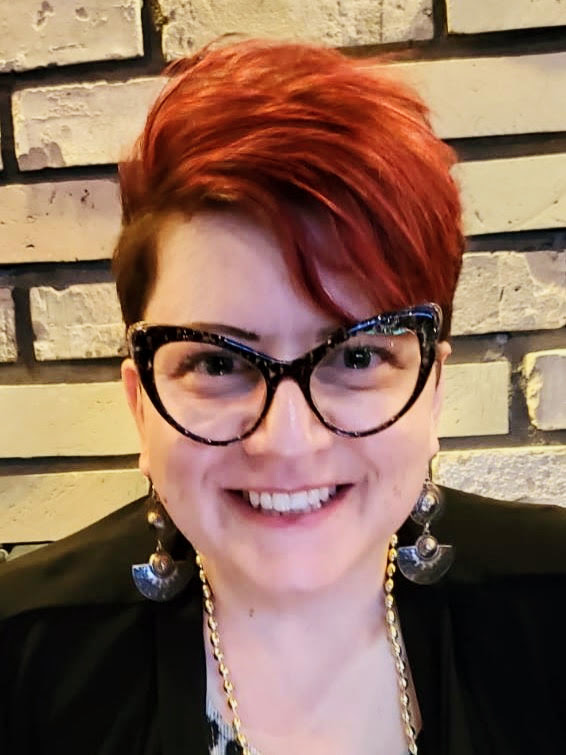Assessment of Girls and Women with ADHD and Autism – A White Spot on the Map?
If you read my previous Letterlife blog post, I hope you took away at least two things. First, ADHD and autism often overlap, meaning that if you suspect one, traits of the other may be present. Second, girls receive their diagnoses later than boys, and girls often mask their difficulties. This poses a challenge in the assessment of girls (and women).
The first challenge
Revolves around even getting to the point of an assessment. As healthcare is organized in many countries today, you often need to get a first evaluation in one setting, followed by a referral to a specialized team in another. Initial assessments are usually made in child- and adolescent healthcare, school healthcare, or in the family doctor’s office. Girls with significant difficulties and, for example, intellectual disability are usually identified early in life, showcasing that the system also can be effective.
However, girls with normal or high intelligence are more frequently missed in the initial assessment. They often seek help for anxiety or depression, and we may only see these symptoms during the first visit. Moreover, girls with autism can give a very socially adept first impression. I’ve read many medical records describing autistic girls as giving “good and adequate social contact,” often meaning they answered questions from doctors or psychologists to the best of their ability. To an untrained eye, such behavior might seem “non-autistic.”
However, deeper investigations reveal that girls and women with autism often exhibit more eye contact, use more gestures, and have a more developed language than same-aged boys with autism. Also, if a girl also has ADHD, her direct and spontaneous impulsivity may be interpreted as her being much more social than she actually is. That is why relying on “general clinical intuition” regarding girls with neurodevelopmental conditions can be tricky and result in girls being overlooked, either dismissed entirely or receiving unspecified treatment for anxiety- or depressive symptoms.
It is of course great that girls and young women get treatment, but if we don’t consider underlying ADHD or autism, there’s a risk of the intervention being too demanding for the girl, potentially worsening her problems.
Screening instruments
There are various screening instruments designed to identify neurodevelopmental conditions such as ADHD and autism. There are also screening forms specifically tailored for capturing girls although none of them are validated according to any consensus guidelines. Additionally, a screening instrument itself can never be used to diagnose anyone (even though many of them may give that impression when presented in fancy tables with various cutoff values). Worst-case scenario, they can give a false sense of security and lead us astray.
Therefore, comprehensive questionnaires covering various life areas are often preferable. These questionnaires include batteries of questions ranging from motor skills to mental health, leaving room for free text responses from parents and school staff. Starting with a broad battery is a good approach when looking for typical signs of autism and ADHD in girls. Check especially that there are questions capturing:
- The quality of the girls’ friendships? Never just ask if the girl has friends or not because most will answer yes to that question. Make sure you have experience of how girls of the same age usually play/interact with peers and ask if the girl engages in the same way.
- The quality of the schoolwork? Parents’ narratives are crucial here. In school, girls with autism and ADHD, with normal to high intelligence, are often perceived as fairly well-functioning. Many of these girls have developed a high ability to mimic classmates’ ways of handling schoolwork, so it can take many years before school staff realize the extent of the girl’s difficulties.
- Look especially for challenges with independent organization and planning (referred to as executive functions in psychological terms).
- How much energy is consumed across an ordinary day? Girls with autism and ADHD are often drained of energy masking, mimicking, and coping with sensory overload. After day school the only way to go is home to rest. And even the rest can be masked by getting stuck on the phone, or repeatedly watching the same favorite Netflix series. Things that on the surface seem like “typical teenage behavior”.
Therefore, it’s crucial for us to do screening and assessment of girls and women with ADHD and autism to have a deep understanding of the typical “female profile.” Otherwise, we may miss to direct our questions to the most important areas. Many studies have shown that girls’ and women’s own experiences and descriptions contain the most important clues. Due to their masking ability, both school staff and parents may overlook the extent of the difficulties these girls actually face. But when girls themselves describe their difficulties, we get the most accurate picture. So, aside from listening to parents, it’s important to listen carefully to the girls and women themselves.
Once a girl or woman with ADHD or autism has passed the “needle’s eye” of the initial assessment and gets to undergo a full evaluation, there are some important learnings about this stage too.
Autism assessments often recommend using the ADOS, an instrument developed to detect difficulties in social interaction, particularly in autism. However, just like with screening instruments, no evaluation tool can either confirm or dismiss a diagnosis. Tests can only point us in a certain direction.
Girls seem to be easier to miss on the ADOS, perhaps because they use more gestures and give more eye contact than boys with autism. But remember, the ADOS is one piece of the puzzle in an assessment; but is just that – one piece.
In addition to this result, we consider narratives from parents, reports from preschool and school staff, and, of course, what the girl or woman herself describes. And then, we interpret all the information based on the diagnostic manuals and our professional knowledge about how girls and women with ADHD and autism typically present.
Does it sound complicated? It is!
That’s precisely why it’s so important that we work in teams. Judith Gould, a UK based psychologist and researcher with extensive experience in women with autism, argues that “experience must be the golden standard” when assessing girls and women. By that, she means that experience is the most important tool, and that tests or rating scales never can take its place.
Yes, it’s complicated to assess girls with ADHD and autism. And it’s also endlessly exciting and rewarding. It’s like exploring a white spot on the map. And who wouldn’t want to be part of exploring new territories? Conducting a thorough assessment that results in a diagnosis valuable for the girl and her family can contribute to increased quality of life, better mental well-being, and greater self-compassion. And in the end save lives!





